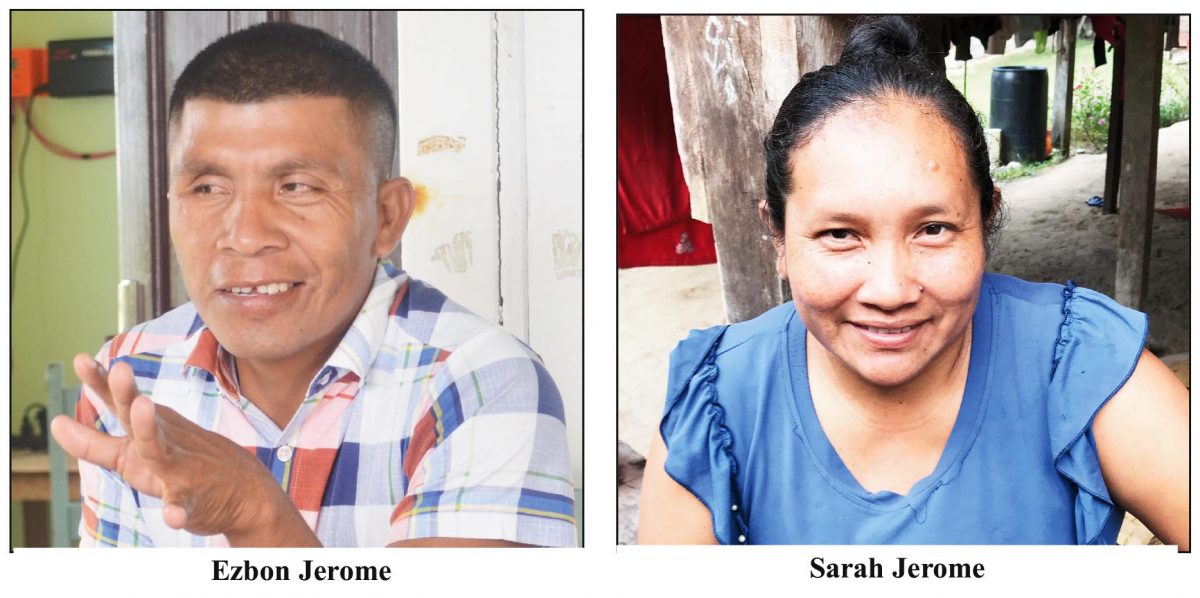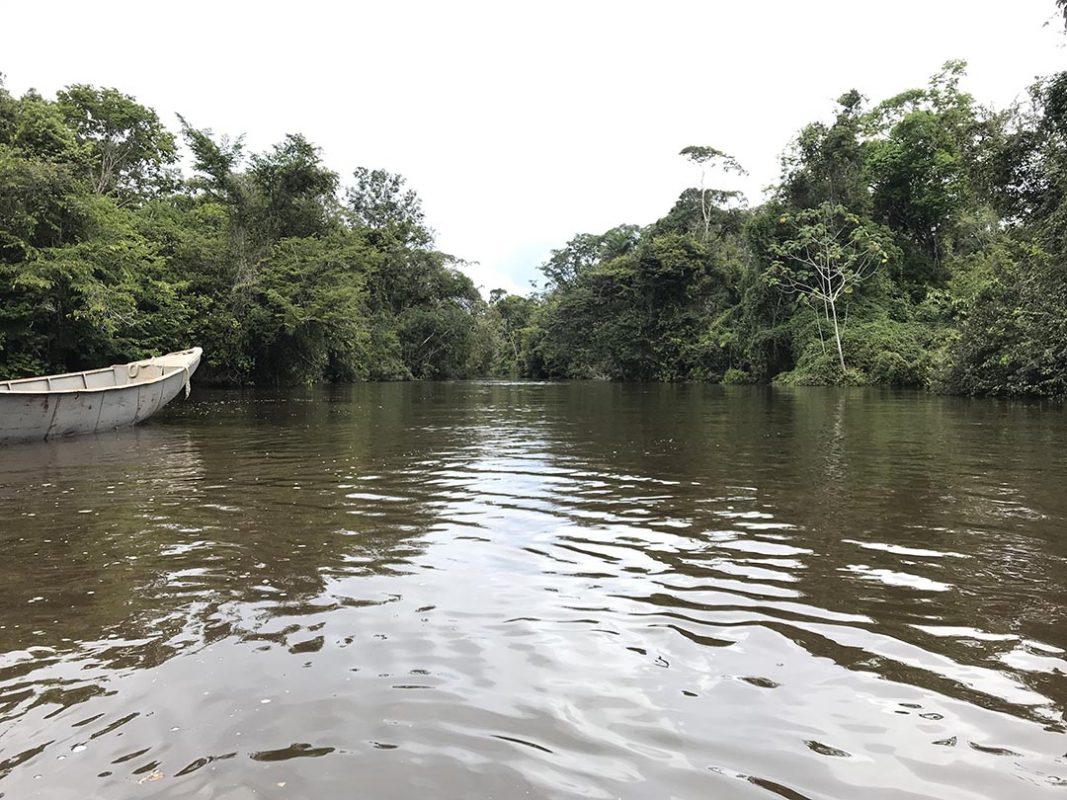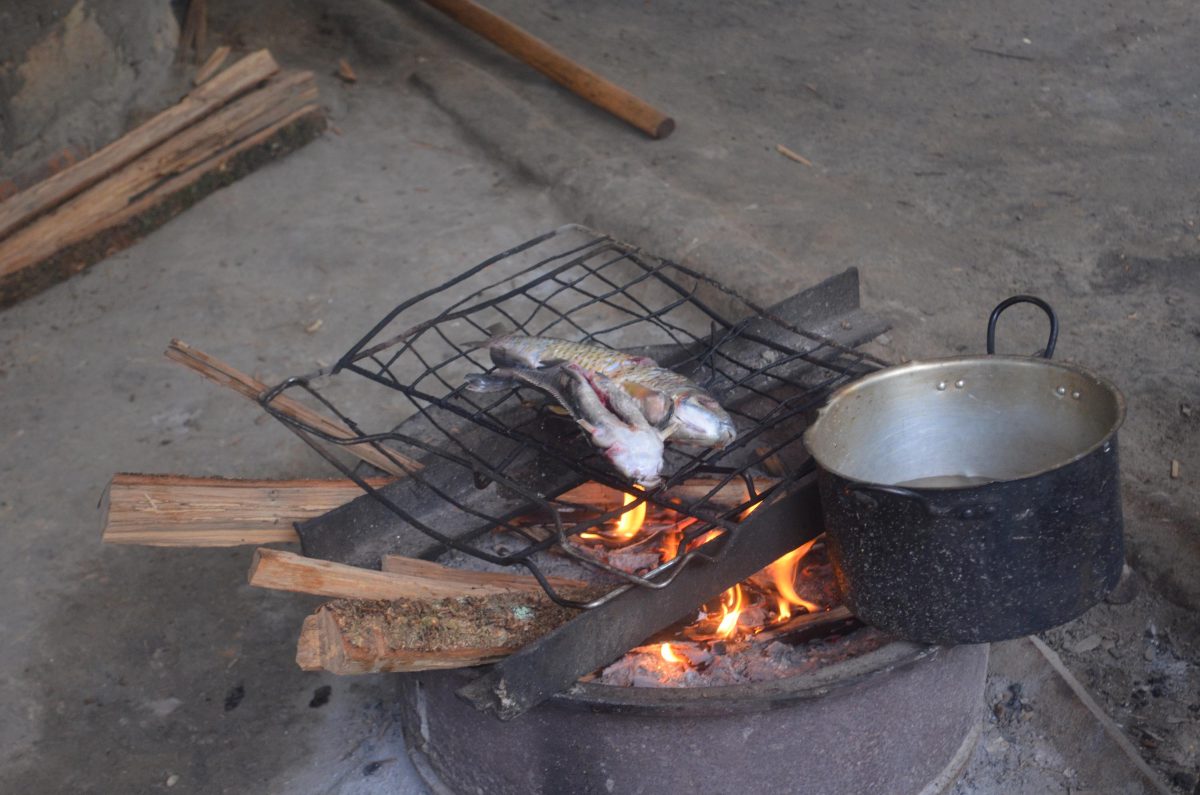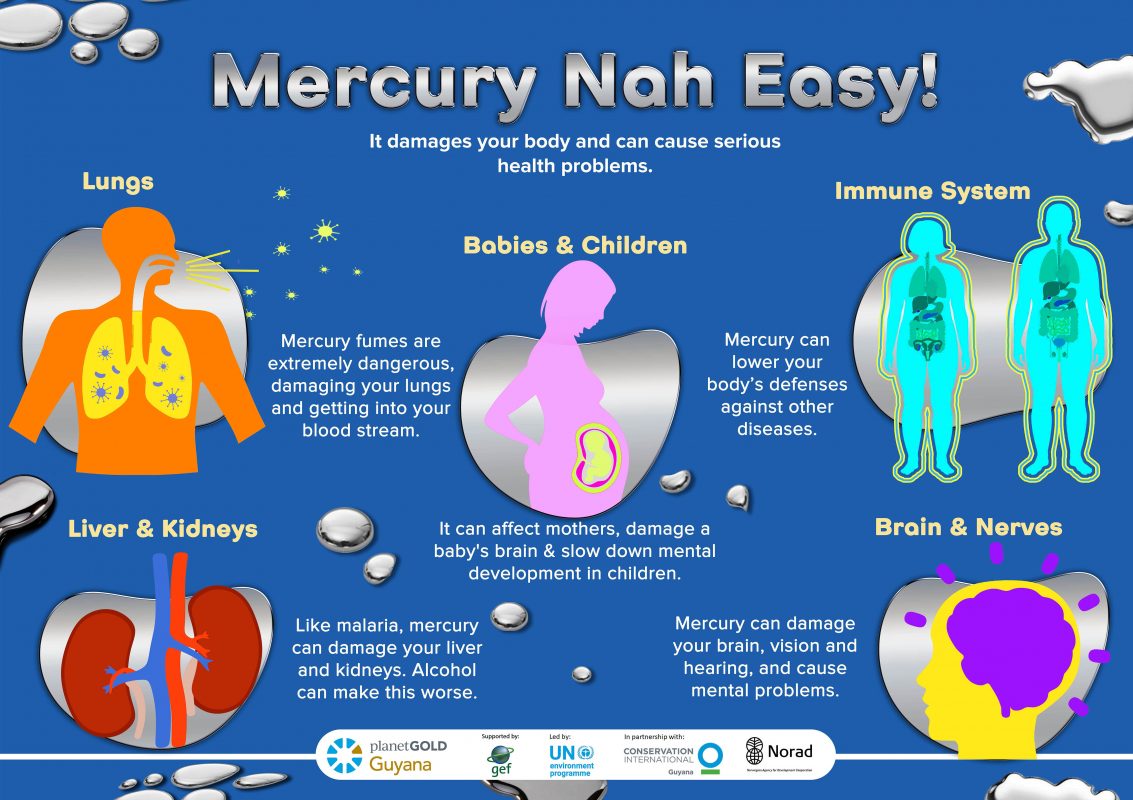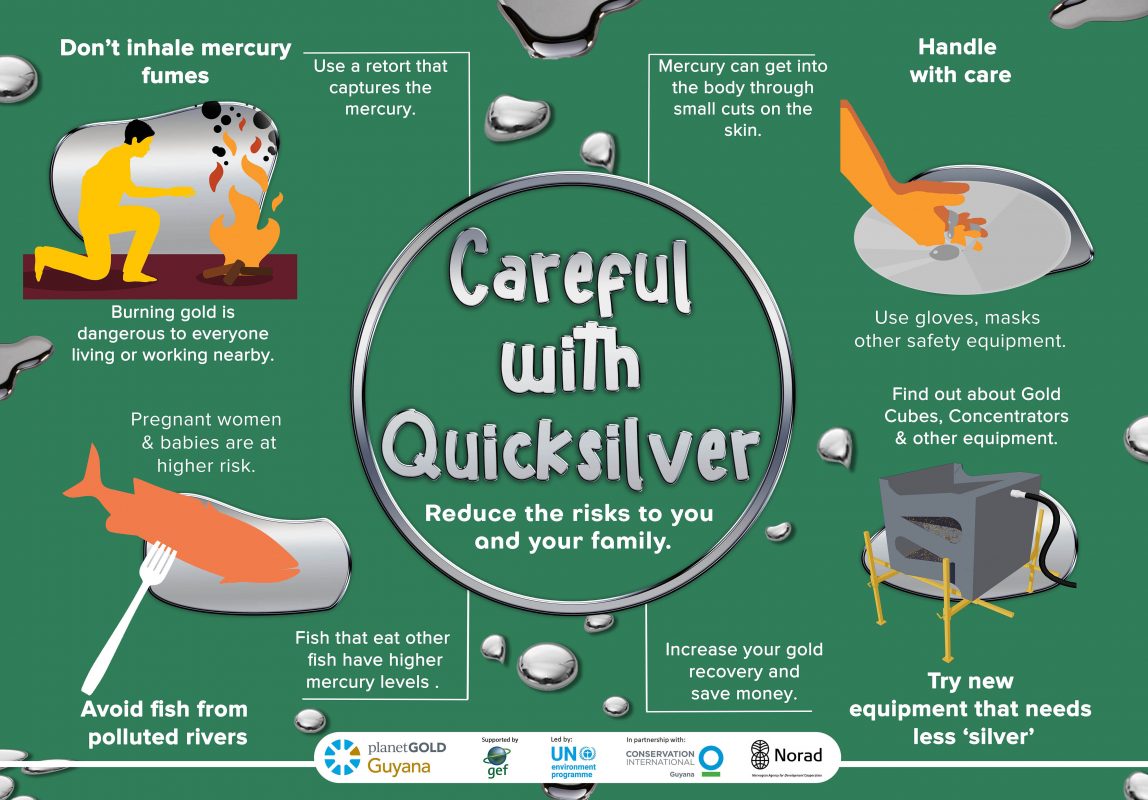Four years after a study found that villagers of Parabara, in the Deep South Rupununi, had high levels of mercury exposure, they still remain in the dark about the significance of the discovery, with many going about their lives as they always have.
“We only keep hearing of mercury poisoning… but nothing is wrong with people… everyone still eats the fish and most people drink from the river and everything continues as normal,” resident Sarah Jerome told Stabroek Weekend.
Sarah’s sentiments are the same as those of many villagers, who told this publication that they do not fully grasp of the findings.
With mercury use still widespread in Guyana’s mining sector while knowledge of its dangers scant among those vulnerable, the World Wildlife Fund (WWF) in collaboration with the South Rupununi District Council (SRDC) in 2017 decided to test samples of hair from women in Parabara, Aishalton, Karaudarnau and Shulinab for mercury.
It was found that all the test subjects had high levels of mercury in their system, with Parabara reporting the highest.
Parabara is a small community with just about 200 persons from the Wai Wai and Macushi nations, located approximately two and half hours away from Aishalton, the hub of Deep South Rupununi.
Illegal mining activities were the suspected cause of the mercury exposure after a gold rush in the backdams of the village a few years back. The use of mercury, known as ‘quick-silver’ and ‘silver,’ by small and artisanal miners from Brazil and Guyana was unregulated, resulting in pollution of the creeks and rivers. One such river is the Kuyuwini River, which has been Parabara’s main water source and continues to serve the domestic needs of the people.
Mining operations in the village backdam have since halted, reducing the significant use of mercury but miles away mining at Wakadanau poses a renewed threat as the creeks flowing through that community are connected to the Kuyuwini River.
But sitting just outside her kitchen with overcast clouds above, Jerome noted that many villagers still have questions about the findings of the WWF study.
“They should come and explain to us what is happening and tell us what mercury is. Our main protein [source] is wild meat and fish. But we mainly depend on fish here and my family try to use rainwater but many of our people still depend on the river. They [should] come to let us know if we have mercury in the water and if it is in the fish and if it is still here in the community,” Jerome stressed.
For a short while, residents had cut back eating fish and instead tried to use other sources of protein but with limited options they returned to consuming fish. In addition, the village suffered further as it lost many of the markets for its fresh caught and preserved fish. Some small miners continued to buy fish but many in neighbouring villages remained skeptical of eating the fish caught from the area.
“I can’t say if we have mercury here and if it is affecting us because we don’t have staff to test the water and fish. Maybe I have it, but we can’t say. We still eat the fish from the river. Fish is our main diet here,” former Toshao of Parabara Richard Andrew said.
He explained that since the findings of the study, there has been no follow up by government or health authorities to determine how they should move forward and he called for responsible agencies to return to the community and conduct further testing, not only in the environment but on the people.
Overdue
In the community’s health post, a poster highlighting the symptoms of mercury poisoning and how it can be avoided, is mounted. The lone health worker, Ezbon Jerome, also said it is unclear whether mercury poisoning is widespread in the village as he pointed out that he has not seen persons displaying or visiting the health post with symptoms.
Exposure to mercury can have different toxic effects, including on the nervous, digestive and immune systems, and on lungs, kidneys, skin and eyes, the World Health Organization (WHO) states on its website.
Human exposure occurs mainly through inhalation of elemental mercury vapors during industrial processes and through consumption of contaminated fish and shellfish.
Mercury is toxic to human health, posing a particular threat to the development of the child in utero and early in life, the WHO further explains, while noting that once mercury is released into the environment through activities like gold mining it evolves by bacteria into methylmercury.
“Methylmercury then bio-accumulates (bioaccumulation occurs when an organism contains higher concentrations of the substance than do the surroundings) in fish and shellfish. Methylmercury also biomagnifies. For example, large predatory fish are more likely to have high levels of mercury as a result of eating many smaller fish that have acquired mercury through ingestion of plankton,” it added.
Despite the lack of persons presenting with symptoms, Ezbon Jerome nonetheless believes that regular testing should be done.
“Since the finding nothing was really done to test more people and to see whether they are affected or have the symptoms, so we cannot say what is happening,” he lamented. He also explained that despite the alarming discovery, the Ministry of Health never intervened or conducted any assessment to determine if villagers are victims of mercury poisoning. “The last mercury test was done two years back but there should be follow up tests by the government. We don’t know if we have. It will be good for us to know. It is overdue. They should have one in this community,” he added.
Neither the Ministry of Health nor the Ministry of Natural Resources offers testing options for mercury poisoning or suspected cases.
When this newspaper reached out to the spokespersons of both ministries to determine how they handle testing for suspected mercury poisoning and whether they are equipped to do so, they redirected this newspaper to other agencies while pointing out that they do not deal with such cases.
The Environmental Protection Agency said while it is not equipped to conduct testing, through a third party agreement it can collect samples and use the services of local and inter-national laboratories. However, it was highlighted that the agency only conducts tests on samples taken from the environment, and only if it is called to investigate cases of mercury pollution.
At Eureka Laboratories, the only facility in the country with the capacity to test for mercury in people, officials said they see between 10 and 20 persons every fortnight requesting the service. Most times, those requesting the service are from large scale gold mining firms in the country. On rare occasions, small miners will walk into the facility and request a test, Nekeisha Stemple Deputy Laboratory Manager at Eureka said.
The service costs $25,000 per test.
The normal levels of mercury in a person should be within 10 nanograms per milliliter (ng/mL); any higher levels should receive medical attention.
A level of 1 to 2 μg*g-1 for mercury found in hair is considered to be normal; how-ever, people who consume fish on a daily basis are expected to have levels exceeding10 μg but from the WWF study it was highlighted that people from the community of Parabara express-ed a record high average level of 26.93 μg*g-1 total for mercury.
Access
Around 94% of all mercury emissions from Guyana are generated from gold mining activities, according to the website for planetGOLD, a programme supported by the Global Environment Facility, and led by the United Nations Environment Programme and implemented in partnership with the United Nations Industrial Development Organization, United Nations Development Programme, and Conservation International.
In 2013, Guyana signed the Minamata Convention on Mercury, a global treaty designed to reduce mercury emissions to protect human health and the environment. The convention calls for a ban on the use of mercury for mining. Guyana ratified the convention in 2014, and committed to reducing mercury use down to 75% of baseline levels by 2027.
Efforts have been underway to get miners to transition to mercury-free mining. However, with new technology being costly, miners have yet to be sold on making the switch.
Over the years, Conservation International has been working with communities, small, medium and artisanal miners and other stakeholders to educate those at risk about the dangers of mercury poisoning under the EL Dorado Gold Responsible Mining Initiative. The campaign is used to raise awareness around the dangers of mercury to human health and the environment and actions to reduce exposure.
“We think that these efforts should also be supported by improving local capacity to test for mercury in humans and treatment of cases of severe exposure,” CI said in a response to what it is doing to combat mercury exposure,
Under the programme, it said it is collaborating with stakeholders to demonstrate and transfer relevant technologies and techniques, improve access to financing, and to create a market for verifiably responsibly produced gold.
Many miners are also quick to defend their use of the chemical, saying that they do not release it into creeks or onto the land environment.
Access to mercury is also very easy. “They sell it right at the landing,” a small-scale miner said. He revealed that he uses a mechanical crusher and so mercury is vital for the extraction of the gold. “We only use a small bit of mercury and that is not dangerous,” he stated.
Another miner, Sheldon Liverpool, said that he does not use mercury in his gold mining operations and opined that although there are many miners who use the chemical, he has not seen or heard of anyone suffering from mercury poisoning.
Although Liverpool has no qualms regarding drinking water from the springs in the area, many other miners do not source their drinking water from the creeks or springs. One revealed that they store rainwater for drinking because they are not sure which of the creeks are contaminated. Others said that they dig wells close to their camps and use those for drinking water, while stressing that they never go to the creeks for the same reason. Although aware of the dangers of using mercury, many miners said that it is necessary for the extraction of gold.
Still concerns about mercury exposure persist. Spokesperson Immaculata Casemiro told this publication that the SRDC has tried to educate the people but much more needs to be done. She said that efforts are underway as her organisation is in talks with the WWF to fund more testing not just in Parabara but the entire South Rupununi.
Kemptorne Daly, Communications Officer at the WWF Guyana office, in an invited comment, said there are no plans at this time by his agency for follow up testing in the community. Daly nonetheless stressed the WWF recognises the importance of educating “people in our society, especially those working and living in areas where mercury is used in gold mining, to make them fully aware of the dangers of mercury, not only to the environment but also to their health.”
From the WWF Guyana office’s point of view, he said, there is still a need to strengthen existing public educational programmes and to develop new approaches that focus on providing detailed and updated information on the different sources of mercury exposure and contamination. He also stressed that persons should have access to proper emergency and first-aid response to threats of mercury poisoning.
